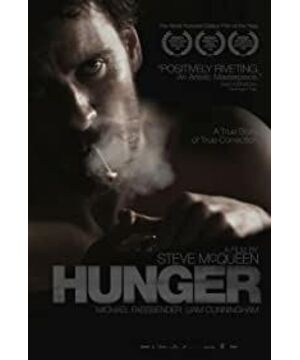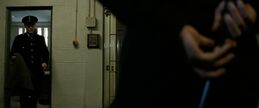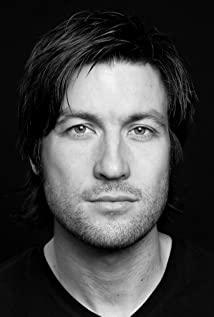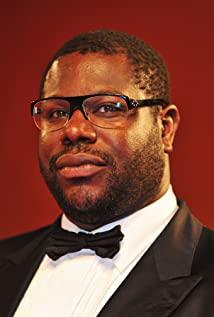with the film
- Talking about the artistic style of director Steve McQueen
A 2014 film about a free black man in New York who was abducted A feature film that became a black slave and finally regained freedom after suffering, won the best feature film at the 71st Golden Globe Awards and three awards at the 86th Academy Awards. With such a gimmicky film, it naturally attracted the attention of many audiences. The director of this film is also well known. This black British director uses his sharp point of view, unique perspective, bold thinking, rich lens language and unique aesthetic expression. Attracting the favor of more and more movie lovers, he is Steve McQueen.
Steve McQueen, a director accustomed to free exploration, finding himself in the process of making mistakes. In 2008, he completed his first feature film "The Hunger", which depicts the last chapter of the life of IRA member Bobby Sans, and won the Caméra d'Or at the Cannes Film Festival in the same year; in 2011, No. The two masterpieces "Shame" premiered at the 68th Venice Film Festival and won multiple awards: in 2014, "Twelve Years a Slave" became the current McQueen. It proves his correctness in film exploration, making him the most promising director in the film industry. Through McQueen's three representative works, it is not difficult to see his artistic expression style in film narrative and other aspects. In the selection of subject matter, the use of long shots and the expression of audio-visual language, the director has fully displayed his own style.
The perfect combination of long shots and lines clearly conveys the theme of the film. In these three films, Steve used a lot of long shots to express the theme of the film. These long shots are not only to enhance the narrative of the film, but also a reflection of the director's conception and style. Because the long shot has its particularity in the recording of time and space, once it is used inappropriately, it will bring a strong sense of boredom and discomfort to the audience. Therefore, many rookie directors rarely use long shots that take too long in the processing of shots in the early days. McQueen, on the other hand, did the opposite, using a 17-minute fixed-length shot in his debut film, The Hunger. And because of this long shot is well known by many filmmakers. McQueen accurately captures the beauty that long shots can bring to the audience, uses it skillfully, and then manipulates the audience's emotions. What the long shot brings to the audience is an undoubted sense of reality, the space is real, the atmosphere is real, and the process is real. Its beauty lies in the continuous change of light and shadow, and creates atmosphere and hints with the lines. Take, for example, a scene from the movie Hunger, where Brandon and Marianne walk side by side down the road after a date. The flickering street lights successfully manipulated the audience's emotions. Through the cooperation of the lines and the lights, the audience conveyed the emotional change between the two people from embarrassment to a happy conversation. The director successfully used the uniqueness of long shots to bring the audience into the emotional direction of the protagonist of the film. This kind of use of long takes is not difficult to see in every McQueen film. In "Hunger", the long shot of the well-known dialogue, also matched with the lines, shows the true theme of the film "Hunger". In his famous film "Twelve Years a Slave," the long takes become a vehicle for advancing the rhythm of the film, suffocating the overall atmosphere in the second half of the film. In one place, Solomon is hung from a tree, and the director used a three-minute long shot to show what happened at that time. Except for a female slave who brought water to her, the others were indifferent. This shows the servility of black people who were suppressed for a long time at that time very clearly. In the same way, the use of long shots to convey the emotion of sadness and helplessness to the audience. This kind of emotion is exactly the same as that of the elder brother to the younger sister in Hunger. Steve McQueen's directing style is gradually revealed. This directing style, which conveys the main idea of the film to the audience directly through the combination of lines and long shots, reflects McQueen's free spirit when he shoots his works, which is different from the bold attempts of the directors of the same period.
The combination of long shots and lines to express the main idea can be said to be McQueen's exploration of film audio-visual language, and the choice of film theme and the depiction of details can be said to be McQueen's own film stylization. specific performance.
The film pays more attention to those individual lives who are in deep desperation, and uses details to describe the characters and trends. As a rookie director, McQueen is willing to choose heavyweight themes that other directors rarely touch when the theme is established. This courage and courage has won the recognition and admiration of many audiences. The protagonists of McQueen's three films are all characters on the brink of despair. Whether it's the Northern Irish revolutionary in prison in "Hungry", the sex addict who can't get rid of his psychological barriers in "Shame", or the handcuffed slave in "12 Years a Slave", they are all The most helpless person in that situation. They all want attention and understanding, and hope that their predicament can be relieved. McQueen was the man, the man who caught their humble soul with his sharp eyes. He can't really redeem them, but he is willing to be the messenger who lifts up their beast-like souls. When dealing with this extreme subject matter, McQueen is always careful to observe all aspects, and then adds the most real emotions and details to the film. In his films, the audience can often see two characters on opposite sides. In the film, there are political prisoners who are on hunger strike; sex addicts who are reckless; black slaves who are exploited and humiliated; prison guards who are frightened by the revolutionary party; sisters who make sex addicts at a loss; slave owners of all kinds. These are all manifestations of the director's style. The director tries to incorporate all the details, and tries to tell the story to the audience as completely and comprehensively as possible to convey the emotions of the protagonist of the film. For example, in the film "Shame", there is a clip about the female lead singing and the male lead crying. There is a detail here, which the director used very cleverly, which is the time when the male protagonist burst into tears. The male protagonist's tears happened just after the only time his sister and him looked at each other. Perhaps the change of the male protagonist's emotions is related to the lyrics, but the director chose such tiny details to show the real emotions of the characters, and then hint to the audience that the male protagonist's own emotional problems are real. Similar details are used in the other two films. McQueen's films always make the audience have a wonderful feeling after watching the whole film. It turned out that an Irish revolutionary army who was starving to resist the government and was weak and dying actually had the heart of a young man running in the mountains; Eyes; a black slave who has been exploited for his freedom and lost everything, has a more noble and civilized temperament than any slave owner. These are all things McQueen wanted to convey to his audience through his films. He does not miss every detail, and never repeats much. He just wants his heart to really think
Regarding the handling of the subject matter and details of the film, it is obscure or imperceptible to some viewers. The breakthrough made by McQueen in the perspective effect is that every audience can really feel it through the lens, and the simple and direct lens transmission directly touches people's hearts.
Use the lens to show the real and strong pain, and transmit it to the audience through vision. Each of McQueen's works seems to have a strong impact on the audience. No matter in the choice of subject matter, the display of picture composition or the expressive power of the lens, they have left a deep impression on the audience. To say that McQueen's three films bring the audience the most intuitive commonality, that is the endless pain. In "Hunger", Bobby is in the final stage of the hunger strike, and his body has begun to rot and purulent. The director uses a continuous clip to make multiple transitions between Bobby's body and the marks on the sheets, so that the audience can really feel When it comes to the pain that Bobby is suffering at the moment, in that desperate situation, Bobby can only resist with his body. That kind of silent resistance makes the audience feel more depressed and more powerful. Similarly, in Twelve Years a Slave, there is a scene where Solomon beats Patsy, and the director uses a close-up shot to depict the welts on her body. Let every audience feel a powerful visual impact, and can't help but take a breath. And then the drug-taking clip was exactly the same as in "Hunger", which aroused the sympathy of the audience. These shots are a reflection of the film's charm. The director uses his unique visual impact technique to bring deep tingling to the audience through the tension of the lens. The director uses the particularity of the film lens to further enhance the appeal of the film. This can be concluded from his film "Shame", the segment where the brother and sister quarreled was the climax of the film. The audience's emotions were ignited by the fierce quarrel between the two, which further aroused the audience's attention to the development of the subsequent plot. When the audience saw the result was the sister lying on the ground covered in blood. What it brings to the audience is not only a visual collision, but also a test of the audience's heart. It can be said that McQueen is cruel. He put the fact that the audience did not want to face the most and has been avoiding it in front of the audience, causing the audience to be amazed. This is the epitome of the film's appeal. After watching the whole film, what I remember is not the pictures full of lust, but the faces of the male protagonists. The pain, sadness, anger and shame on that face are magnified infinitely, until the last minute of the film, the addiction seems to be uncured. In the other two films, apart from the wounds that hurt the heart, what the audience remembers is also the protagonist's face. Every face is filled with endless longing, helplessness and resentment. McQueen used a more intuitive way to transmit pain, breaking the gap in time and space, and reaching into the depths of the audience's heart, which inevitably made every viewer shudder and feel the same. With its strong visual shock, it breaks the distance between the audience and the protagonist of the film, bringing the audience to the film.
Steve McQueen, a director who dares to use the voice of the film, all he can do is to use his own weak strength to replace those helpless people's inner cry. With his own lens, he insists on telling true stories that have been deliberately avoided by people. With his unique directing style, McQueen insisted on groping forward on the road of film creation, and left a strong mark on the film with his steady steps.
View more about Hunger reviews











